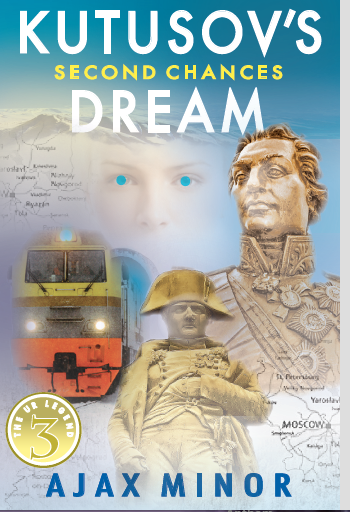Kutusov’s Dream, Book 3 of The Ur Legend series, is about to be published. I’ve finished reading through my editors’ notes and made my own corrections. All is ready but I’ve decided to give it one last read. A project years in the making deserves the extra effort. We want it to be as good as it can be.
So it’s time for a bit of shameless self-promotion. I’m an Indie author after all and if I don’t promote my work who will? I’d like to give you some reasons to read the books if you haven’t already finished the first two.
The genre is mixed, which doesn’t always sell to major houses; but this type of loopy admixture can appeal to readers with eclectic or quirky tastes. Book 1, Sun Valley Moon Mountains, is a combination of Magical Realism and pure fantasy. It should be noted that these books are not High Fantasy, a genre enjoyed by many, including this author, and exemplified by such epics as Lord of the Rings by Tolkien and Game of Thrones, inspired by G.R.R. Martin’s books. If you want High Fantasy, elves and dragons, these novels aren’t for you. If you like Phillip Pullman or Neil Gaiman, then these stories should please. It should be noted that there is a menagerie of weird creatures as well as swordplay and sorcery, though in a Classical setting and not typical Tolkienien medieval times.
Books 2 and 3, The Girl from Ipanema and Kutusov’s Dream, are more Sci-fantasy, and are set in a near, recognizable future. While the future described is dystopian, which appeals to many now, it is hopeful.
All books have a philosophical subtext. Sun Valley Moon Mountains explores how we believe the world to exist outside of our minds, or within them. It is a bit of a different approach but is the ‘magic’ that creates the fantasy. The Girl from Ipanema and Kutusov’s Dream explore the complicated, slippery subject of ethics. These topics are discussed in depth in dialogues but are to the point. If readers want to think about the world they can, otherwise just sit back and enjoy the ride.
The books were inspired by the birth accident and death of our daughter, Katherine, and are my way of giving Linda and me, as well as Katie, a ‘second chance’. Some were disappointed by Book 1, believing that it would be a straightforward expression of Grief in a realistic setting. But the point of that book was to show the way toward a different type of acceptance. The main characters, Jaq and Kate, as well as Linda and I, are stoics. Grappling with the ‘whys’ of such a catastrophe, we at last found some measure of peace in the Lao Tse’s Tao te Ching: “Nature does not play favorites. She regards her Creations without Sentimentality”. The universe is not a hostile place, it simply is.
But the continuation of the series in Books 2 and 3 gave me a chance to give our daughter a life as a young woman. While she is a unique and quite fantastic being, she still experiences the emotions that come with emerging as an adult. In short, the series is about the process of becoming and it is a love story as well.
Finally, I believe the common thread in The Ur Legend is connection. Human connection. This is something I myself find difficult at times, for as Kate says to Jaq: “The way to your heart is through your brain. And I do love you for it.” Those of us who connect with our brains more than our hearts still can feel and love, though we may only cry twice a year for practice. I am fortunate that Linda ‘loves me for it’ as much as Kate loved Jaq.
